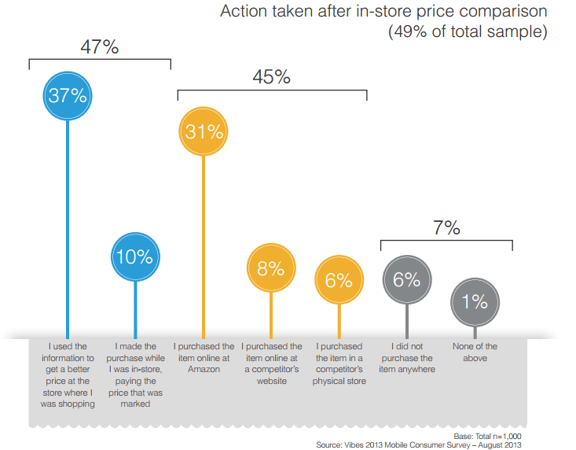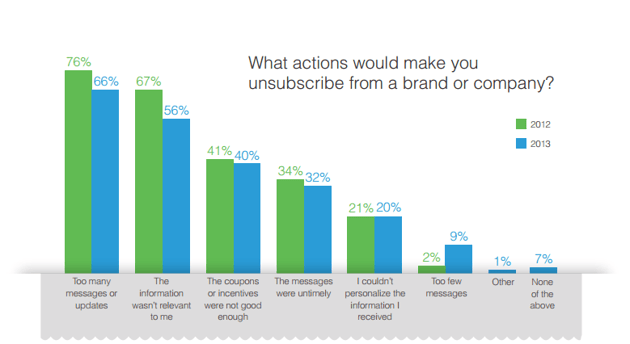The Showroom Showdown

Showrooming, defined as using a brick-and-mortar store as a showroom to browse and then purchase from a competitor for a less expensive price, is now a mainstream shopping behavior, according to a new report from mobile marketing solutions provider Vibes.
The "Mobile Consumer Report: Combat Showrooming with Personalization" reveals that 44 percent of consumers frequently use their smartphone in-stores to comparison shop/purchase from a competitor, while 26 percent use their mobile devices to showroom "sometimes", and only 12 percent deny ever using this shopping tactic. In addition, showrooming has grown in popularity over the last year, with 49 percent of consumers from the study citing they have used a mobile device to compare prices on a competitor's website in 2013, compared to just 33 percent in 2012 - proving that showrooming is becoming an even greater threat to brick-and-mortar merchants.
In fact, after comparing prices on mobile devices when in-stores, the study shows that 47 percent of consumers complete their transaction, while 45 percent go somewhere else to make the purchase and 7 percent don't make a purchase at all. This means that retailers have about a 50/50 chance of having showrooming shoppers complete transactions in-stores. That said, the study notes that brick-and-mortar merchants have taken steps to combat showrooming, with 59 percent of consumers saying they have seen businesses offer a price-match guarantee and 51 percent seeing businesses offer in-store incentives/sales. Other tactics consumers have seen businesses employ to combat showrooming include offering free delivery, providing knowledgeable staff and offering QR codes to provide product information. Yet, the study suggests that the best way for merchants to combat showrooming is with personalization via mobile.

The study reveals, for example, that 89 percent of consumers are likely to sign-up for mobile SMS messages from brands if they are personalized. Among personalization strategies, 60 percent of consumers say that the most important type is that which uses preferences like favorite shopping categories, brands and sizes. In addition, 20 percent of consumers note that timeliness is the most important part of mobile personalization and 13 percent cite location.
When it comes to SMS marketing, however, just 37 percent of consumers admit to receiving text messages from brands. Yet, brands can use this marketing tactic to provide personalized features to in-store shoppers, such as texting to receive product information and special offers. According to the study, 79 percent of consumers will subscribe to mobile messaging from a brand in order to receive incentives or coupons, while 46 percent will sign up to receive product information and updates, and 45 percent will subscribe for exclusive content. But merchants should also note that they can easily push subscribers away. For instance, the study shows that 66 percent of consumers will unsubscribe as a result of too many messages or updates, 56 percent will unsubscribe as a result of irrelevant content and 40 percent will unsubscribe if coupons and incentives are not considered good.


Subscribe to Our Newsletter!
Latest in Marketing








